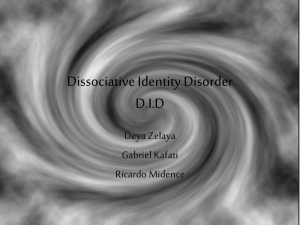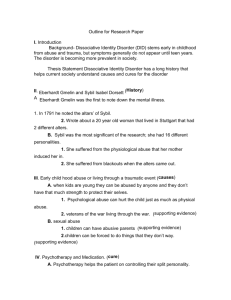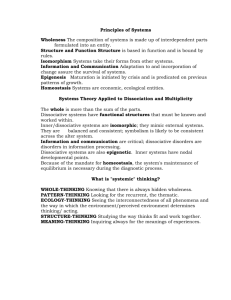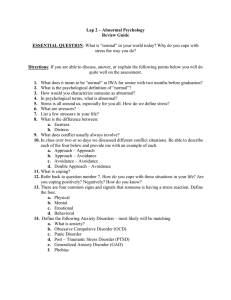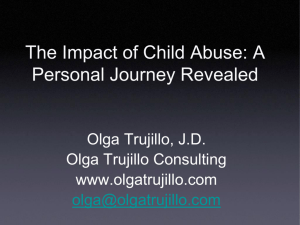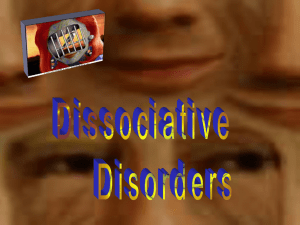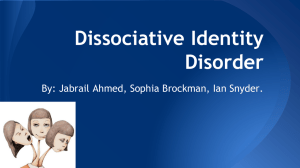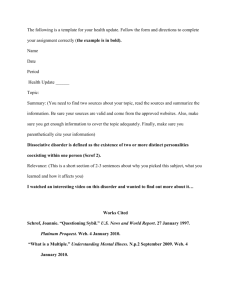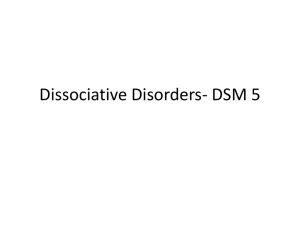Dissociative Identity Disorder Kaitee
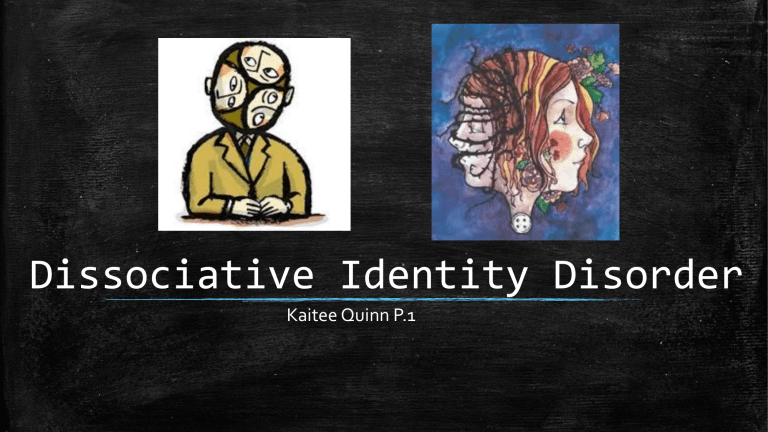
Dissociative Identity Disorder
Kaitee Quinn P.1
Definition
▪ Most everyone experiences Dissociation
▪ The most common example- daydreaming or getting lost in the moment
▪ Dissociative identity disorder is a severe form of dissociation
▪ Also called multiple personality disorder
▪ A mental process which produces a lack of connection in a person's thoughts, memories, feelings, actions, or sense of identity
Signs & Symptoms
▪
▪ Memory loss (amnesia) of certain time periods, events and people
▪ Mental health problems
– Depression
– Anxiety
– Suicidal thoughts/attempts
▪ A blurred sense of identity
A sense of being detached from yourself
▪ A perception of the people and things around you as distorted/unreal
▪ Significant stress or problems in
– Relationships
– Work
– Other important areas of your life
Other info
90%
80%
70%
60%
50%
40%
30%
20%
10%
0%
Occurrence in MPD Childhood
Sexual Abuse
Physical Abuse
Emotional Abuse
Has a Diagnosed Parent
Has a Diagnosed Mother
Causes
▪ Thought to be an effect of severe trauma during early childhood
▪ Develop as a way to cope with trauma
▪ Usually extreme, repetitive abuse
– Physical
– Sexual
– Emotional
Treatment
Treatment
Psychotherapy is the primary treatment for dissociative disorders
Also known as talk therapy
Involves talking about your disorder and related issues with a mental health provider
Treatment
No medications exist that specifically treat dissociative disorders
Doctors may prescribe antidepressants, anti-anxiety medications or antipsychotic medications to help control symptoms of DID
Media
▪ https://www.youtube.com/wat ch?v=N6BY6W9W76M
Bibliography
http://www.webmd.com/mentalhealth/dissociative-identity-disorder-multiplepersonality-disorder
Chart slide 4http://www.viewzone.com/multiple.html
http://www.mayoclinic.org/diseasesconditions/dissociativedisorders/basics/symptoms/con-20031012
https://www.youtube.com/watch?v=N6BY6W9W76
M
https://www.google.com/search?q=medicine&biw=
667&bih=612&source=lnms&tbm=isch&sa=X&ei=0
1QjVYvCEJOXyASg-
IJw&ved=0CAYQ_AUoAQ#tbm=isch&q=psychothe rapy+couch&revid=2098128066
